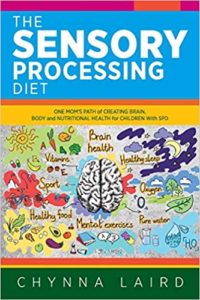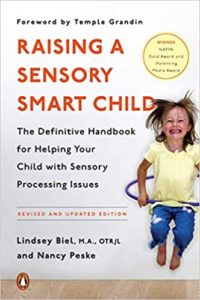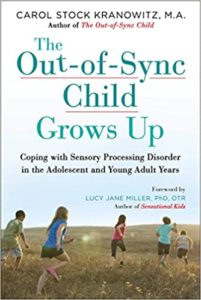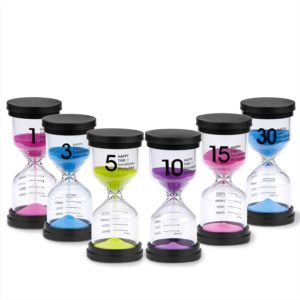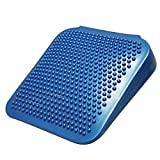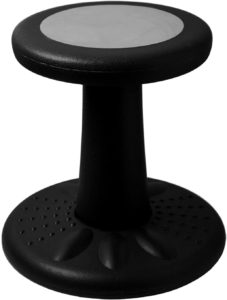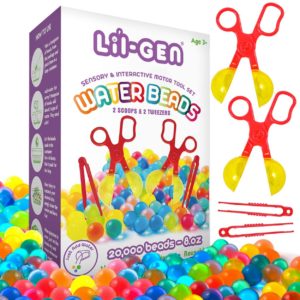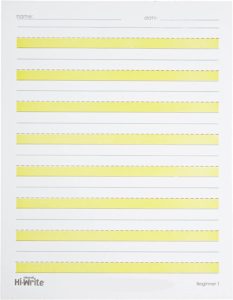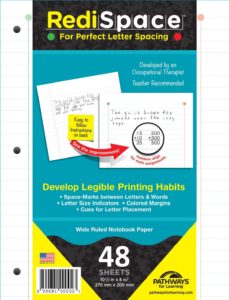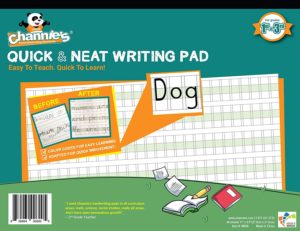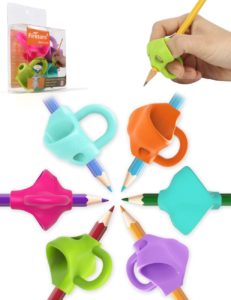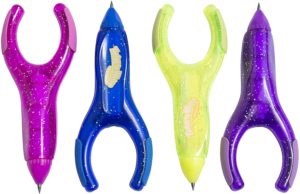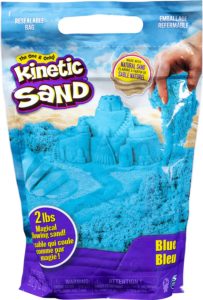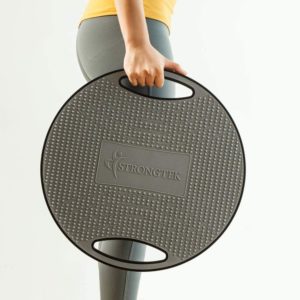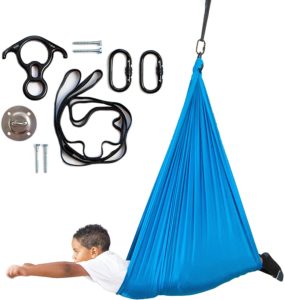A+ Products and Recommendations
Dear Parents,
Many clients have asked for links to specialized equipment, sensory tools, and books that will help them to continue providing therapeutic interventions at home for their child. I have personally researched and located the best possible value for these items on Amazon, which I use in my practice and most often recommend to my students for home use. I hope your children will benefit from these therapeutic toys, games, exercise devices, and books, which are kid tested and approved by A+ Handwriting.
(Disclaimer: Purchasing Amazon items through these links will allow my business to earn an itty bitty commission, which does not add anything extra to your cost for each item).
– Books
– Executive Skills
– Hand and Fine Motor Strengthening
– Handwriting Helpers
– Sensory Integration Products
BOOKS:
The Sensory Processing Diet, by Chynna Laird
Raising a Sensory Smart Child, by Lindsey Biel, M.A., OTR/L and Nancy Peske
The Out-of-Sync Child Grows Up,Coping with Sensory Processing Disorder in the Adolescent and Young Adult Years, by Carol Stock Kranowitz, M.A.
EXECUTIVE SKILLS:
Plastic Hourglass Timers: Want your child to work faster for completing schoolwork or chores? Use a plastic hourglass sand timer, and watch the race to the finish. Use timers for Minute-to-Win-It educational games. Allows kids greater awareness of time passage without any alarming alarms or ticking sounds. Plus, it’s fun to watch the sand fall as an intriguing visual sensory experience.
Wobble Cushion: Sits on top of a regular chair or surface, and provides quiet vestibular sensory input for improving focus and attention span when required to sit for periods of time, as in classrooms, church, and family meals. It’s a WIN-WIN for meeting the child’s needs for movement while maintaining peace with others in the room.
Wedge Cushion: This type of wobble cushion is beneficial for students who have low muscle tone where they tend to slump in their seats, lean back too much, or tend to sit in a banana posture. The wedge cushion places the child’s pelvis in a more anterior tilt, which facilitates a more upright trunk posture and allows a small amount of non-disruptive “body wiggling” movement (vestibular input) that children crave when sitting for long periods of time. This particular wedge cushion is 15″ x 15″ and fits all sizes of seats, while providing an additional tactile input option with the raised bumps on one side if desired. This is a great way to achieve passive sensory input while improving posture and focus!
Wobble Chair: This is an ingenious design in postural ergonomics to promote upright seating posture (for better handwriting and learning), improve core muscle tone, and at the same time allowing kids to get some vestibular input (i.e., movement that they crave, and one reason why they can’t sit still for long periods of time), which increases alertness and focus, while not distracting others in the room. Available in a variety of colors.
Ball Chair: Less expensive than Wobble Chairs, but still effective in providing the necessary vestibular (movement) input for a child who is unable to sit still and focus for long periods of time (i.e., while doing school work). Available in a variety of fun colors and sizes.
HAND & FINE MOTOR STRENGTHENING:
Air Dry Clay: This clay is super-soft, not greasy, very lightweight, doesn’t stick to hands, unscented, and is a favorite style of hand strengthening manipulatives to spark creativity, sensory input, and finger strengthening for all ages. It comes with a little booklet with step-by-step pictorial instructions for a variety of clay creation ideas.
Aqua Magic Doodle Mat: A perennial favorite way for kids and parents to enjoy doodling with a water pen in a mess-free way. Occupational Therapists love the way this mat promotes weight bearing and lying prone on the floor, which helps develop the shoulder girdle muscles’ stability.
Beados with Color Pen: A craft activity that promotes pencil manipulation, fine motor skills, and creativity in a fun way. A magical and satisfying craft!
Pickle Pincher: A favorite therapy toy that I often recommend for development of thumb flexion muscle strength, which is often weak in children with handwriting problems. Lots of fun ways to play with a Pickle Picker (i.e., picking up and placing small items; playing checkers)! One can also pick pickles or olives out of a jar easier with a Pickle Picker. Recommended for upper elementary ages and up.
Hand Exercise Eggs: These egg-shaped textured balls can gently improve hand strength in little hands because they are ergonomically designed to fit the slope of hand grasps and come in graded resistances.
Fingers Exerciser (Flexion Grip): Features adjustable resistance from 2-5lbs per finger and allows one to progress from weak/low tone grasps to stronger levels at own pace.
Hand Grip Strengthener/Extensors: Finger extension exerciser that comes in a set of 6 different and progressive resistances, which allows one to progress from weak/low tone finger extension to stronger degrees at own pace.
Water Beads Sensory & Fine Motor Set: Great gift for all ages to develop fine motor scissoring skills in a variety of fun ways with the epic sensory experience of water beads.
HANDWRITING HELPERS
Hi-Write Paper: Pre-highlighted paper helps kids to keep the body part of letters in the proper space, and allows extra room for ascending and descending parts. Three lined with dashed center line format. Perfect for beginner writers of uppercase and lowercase letters.
Redi-Space Paper: This paper provides lightly shaded partitions between letters to improve between letter and between word spacing, while also allowing extra room for ascending and descending letters.
Quick and Neat Writing Pad: This clever paper design provides shaded blocks to visually guide students in proper letter/number sizing, spacing, and for ascending/descending letters.
Firesara Grips: These pencil grips are made of super-comfortable soft silicone, and are an ingenious design to facilitate a tripod pencil grasp, and work great for lefties and righties. They also come in fun colors, patterns, and animal designs, which makes them more exciting for kids.
Twist-n-Write Pencils: This cleverly designed mechanical pencil features thick pencil leads (ie., less breakable), comes in a variety of cool colors, and your child won’t realize it’s placing their fingers in a more functional position for handwriting. My students lovingly refer to this as the “Rocket Pencil,” because, well, it looks like a rocket!
Pencil Weights: Pencil Weights provide proprioceptive sensory feedback to students while they write, which enhances the learning process of sensory-motor pathways development.
Slant Board: This is another ingenious product design for promoting good handwriting wrist posture (helps prevent wrist hooking or strain) and visibility of written material. It includes two clips to fasten the paper to prevent paper sliding. This one is lightweight and portable, can be taken to school folded up in a backpack, and is a reasonable price. Appropriate for both lefties and righties.
SENSORY INTEGRATION PRODUCTS
Balance Ball Trainer: Excellent way to improve balance and overall strength. Great to use for Proprioceptive and Vestibular Sensory Breaks. Includes exercise suggestions on DVD. Kids love it!
Push Pop Fidget Sensory Toy: An addicting sensory fidget enjoyed by all ages. It’s universally loved by kids and adults, alike. Helps one to “fidget to focus” in a discreet way during listening tasks at school or anywhere.
Kinetic Sand: Another satisfying sensory favorite for all ages, for tactile exploration. Put it in a lidded plastic box and mold it into shapes or hide small objects (letter tiles, jewels, nuts/bolts, coins, etc) inside the sand as a treasure hunt or fun educational activity. It’s better than beach sand because it’s clean, doesn’t stick to fingers, molds together well without water, less messy, and no fish smell!
Scooter Board: Scooter boards promote many therapeutic benefits such as upper body strengthening, vestibular sensory integration, core trunk control, and primitive reflex inhibiting movements. Please refer to your occupational therapist for advice on using the scooter board for your child’s specific needs. Typically, the scooter boards are used with the child either seated or in prone, where he/she can propel with either hands or feet. Scooter boards are not designed to be stood on due to a fall hazard. The type I always recommend is the heavy wooden kind. There are cheaper ones made of plastic, but I have found the plastic ones to be more likely to tip off balance and pinch fingers. Appropriate for all ages for loads of fun with scooter board races, relays, or games.
Balance Board: I really like this balance board from StrongTek. It has a textured standing surface, plus a non-slip bottom side. The drawback with most balance boards is the underside is slippery and may damage wood floors. One can buy a cheaper balance board, but will need to place a non-slip mat under the board to prevent slippage. Balance boards are standard protocol in both occupational and physical therapy treatments for vestibular sensory input and balance training activities. Toss a ball or bean bag to a partner or to yourself while balancing. Add cognitive tasks to balance activities such as category naming. This is a must have therapeutic tool!
Basketballs: Yes, plain ole basketballs! Basketballs are the perfect combination of size, texture, weight, and activity promotion that also give a nice dose of proprioceptive and tactile sensory feedback to the hands, while helping to build important gross motor coordination and visual-motor skills. Plain basketballs are great, but light-up basketballs are extra fun and motivating, which is why I highly recommend the light-up style.
Sensory Swing: This may be the MOST POPULAR therapy item that my students (and their siblings) absolutely LOVE. This dynamic piece of sensory equipment is worth the small investment, which will yield years of happy and contented children. In fact, sensory swings are designed with exactly that in mind – providing vestibular and proprioceptive input to promote nervous system calming and peace. Think of it as a little cocoon hideaway for children to retreat from overstimulating sensory environments or from a long day at school. This model comes with the hardware needed to install it safely inside your house.


